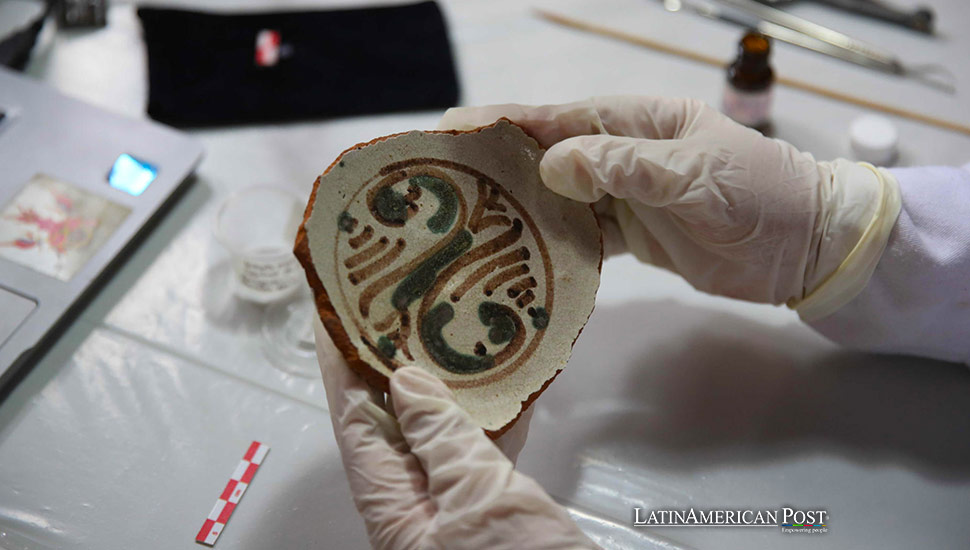Unearthing History: Lima Airport Construction Reveals Ancient Secrets

The construction of Lima’s new airport has unveiled a rich pre-Hispanic past, shedding light on ancient civilizations previously unknown in the region. This discovery highlights the deep historical roots of Peru’s capital and its neighboring city, Callao.
Lima is what it is with Callao, its neighboring city, which has a strategically advantageous location for building a port. This port inspired Francisco Pizarro to establish the nearby capital of Peru. Despite this, the history of this coastal region remained hidden for years until the construction of a new airport revealed a much more prosperous past than previously imagined.
When construction began on the new Lima airport adjacent to the old one, historical records did not indicate pre-Hispanic habitation. However, as the work progressed, the ground told a different story.
“In the area of the runway, the new control tower, and the fuel plant, we have found a dense pre-Hispanic occupation from the Lima period and the Ychsma culture. In the new passenger terminal area, we have found colonial and republican occupations,” explained archaeologist Erika Cabello, director of the particular plan initiated to protect the findings by the company LAP, responsible for the project.
EFE had exclusive access to several discoveries, including a small necropolis with several burials from the Lima period, which developed between the 2nd and 7th centuries. The individuals buried in different positions under what will soon be the new Lima airport were found with various offerings, including pottery, beaded bracelets, and wooden instruments.
This culture, which occupied part of the central coast of Peru, is well-known in the capital, where their pyramidal structures, known as huacas, are often encountered. The burials provide a closer look at a partially unknown culture outside Lima, despite sharing its name with the city that houses a third of Peru’s population.
Layers of History Revealed
Historical layers are read from recent to ancient, as expected in archaeological sites. The surface layers contain the most recent elements, while deeper layers reveal the area’s earliest inhabitants. The teams working on the airport construction have made 50 significant discoveries, each with distinct areas of occupation within the site. This characteristic of pre-Inca Peru shows how different civilizations would abandon an area and relocate nearby.
Among the artifacts recovered are 70 pieces of pottery, including jugs with humanoid faces in relief, small sculptures in feminine or animal shapes, and various instruments. The second chapter of Callao’s history was written by the Ychsma culture, which formed around the 12th century and disappeared with the violent arrival of the Incas.
Numerous domestic vessels from these successors to the Lima culture were found in the runway area under the future airport. Another burial was discovered, which is currently exhibited temporarily at the construction site. This individual’s body was preserved in a large jug and placed in a fetal position.
Excavating these finds amidst the heavy machinery used for construction was particularly challenging. However, through meticulous work, the archaeological team identified dispersed ceramic elements, halting construction to carry out proper excavations and recover the body within the jug.
Interrupted by Conquest
The Incas, of whom no remains have been found, interrupted the area’s occupation, but it flourished again with the arrival of the Spanish. The Spanish established the port of Callao in 1537, which became the most important port in the Americas for several centuries. The Spanish left their mark through agricultural estates, from which relics of viceregal life and a large mill wheel from Hacienda San Agustín have been recovered.
An irregular settlement occupied the area during the Republican era. Thanks to industrial archaeology, elements of daily life, such as bottles and containers from this period, have been found. All the elements found by LAP teams are the state’s responsibility, which has cataloged 59 pieces as national heritage.
The future of these findings lies in the hands of the state, ensuring that the rich history uncovered during the airport construction will be preserved and studied. This effort will allow many tourists from around the world who will land at this new airport to understand better and appreciate Peru’s deep historical roots.
Connecting Past and Present
The discoveries made during the construction of Lima’s new airport serve as a reminder of the rich history beneath modern infrastructure. These findings connect the present with the past, offering invaluable insights into the lives and cultures that once thrived in this region.
These archaeological efforts reveal the Lima and Ychsma cultures, providing a deeper understanding of Peru’s historical narrative. The artifacts and burial sites uncovered depict a sophisticated society with complex rituals and vibrant daily lives. These discoveries contribute to a broader appreciation of Peru’s pre-Hispanic civilizations, significantly influencing the country’s cultural heritage.
Uncovering these ancient civilizations amidst the bustling activity of a modern construction site also highlights the importance of preserving historical sites. The careful balance between development and conservation ensures that progress does not come at the expense of losing valuable historical knowledge.
A Future Informed by the Past
As Lima’s new airport prepares to open, it will serve as a gateway for international travelers and a symbol of the region’s rich and diverse history. The artifacts and remains found during its construction provide a tangible link to the past, enriching the narrative of Lima and Callao.
For visitors and residents alike, the new airport will stand as a testament to the importance of understanding and preserving our shared history. The collaboration between construction teams and archaeologists demonstrates how modern projects can coexist with efforts to protect and honor our cultural heritage.
The story of Lima and Callao is one of continuous discovery and learning. As new developments arise, they often bring opportunities to uncover forgotten chapters of history. The findings beneath the new airport are a reminder that every layer of the earth has a story to tell, each artifact a piece of a giant puzzle.
As we look to the future, it is essential to remember and respect the past. The newly discovered artifacts and remains will continue to be studied, offering insights that will inform our understanding of Peru’s historical landscape. Integrating these findings into the broader historical context ensures that the legacy of the Lima and Ychsma cultures, as well as the Spanish colonial and republican periods, will be preserved for future generations.
Also read: Peruvian Army Aviation Boosts Capacity with Modernized Fleet
The construction of Lima’s new airport has modernized the region’s infrastructure and unearthed a treasure trove of historical artifacts. These discoveries provide a deeper appreciation of Peru’s rich cultural heritage and underscore the importance of preserving our past as we build for the future.





